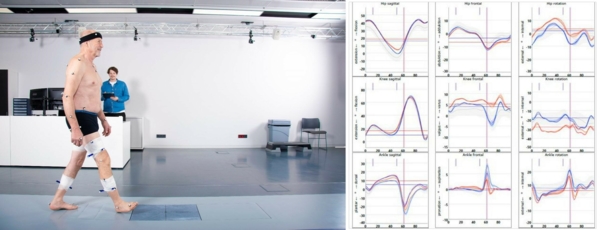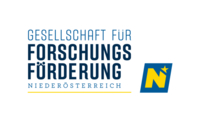Optimisation of time-consuming and error-prone processes in three-dimensional gait analysis.
Background
The analysis of human gait and movement patterns has become an important tool in medical diagnostics. Gait patterns are not only an indicator of musculoskeletal injuries, but also informative of mortality, morbidity, and general quality of life. The gold standard for investigating gait and movement patterns is three-dimensional gait analysis (3DGA); a method that is used in specialised clinics. For this, reflective markers are attached to anatomical landmarks (ankle, knee, hip, etc.) on the body of test subjects or patients and the movements of these markers are recorded with special infrared cameras (see figure). The movement of the markers is converted into parameters providing a description of individual gait patterns. Gait analyses can therefore serve as an additional decision-making tool for healthcare personnel in clinics and rehabilitation facilities as to which therapeutic or surgical measures should be taken.
Project Content
Although high precision in data acquisition can be achieved with 3DGA, it is not without error sources. In particular, inaccuracies during marker placement, soft tissue artefacts (movement between skin, tissue, and bone) as well as misclassifications of individual gait cycles affect 3DGA. Since these problems are known, clinical experts can take them into account to a certain extent. However, if the errors are too dominant, they can undermine the validity of the data to such an extent that they become unusable. This is where the present dissertation project comes in. It is aimed at minimising such sources of error and automating processes by applying machine learning methods. This shall also save valuable working time in everyday clinical practice.
Goals and Methods
Machine learning methods are able to process large and complex data sets and extract patterns and information that are difficult to extract with conventional methods. Imaging techniques (e.g., computer tomography) already make intensive use of machine learning, thus supporting medical personnel in the identification of tumours, injuries, or anatomical structures. In gait analysis machine learning techniques have also proven useful. The present project builds on such work and experience and is intended to minimize the sources of error in 3DGA, reduce processing efforts, and as a result save time for clinical staff. Of course, this also results in added value for the patients. All the project goals are to be implemented using machine learning methods. In addition, a tool supporting clinical staff in processing of gait analysis data is developed.
Results
The findings obtained over the course of the dissertation are published in internationally recognised scientific journals and presented at relevant national and international conferences. In addition, results are made suitable for everyday clinical practice, tested in practice, expanded, and optimised in order to create added value in the long term.
- University of Vienna




